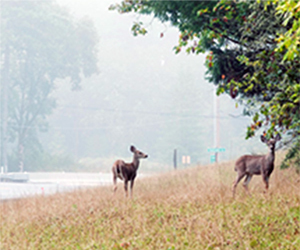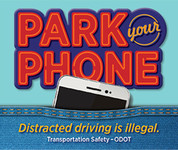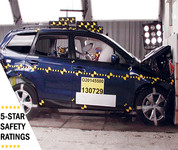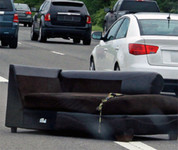|
|
|
April 2022
Heading into the construction season, we’re asking drivers to slow down and be alert.
Road crews use a number of technologies including automated flagging devices, mobile barriers, and portable message signs to make work zones safer. Those are in addition to the traditional color orange for work zones – signs, cones, and the vests road crews wear.
But road crews can’t do it alone. We’re asking you to do your part to keep yourselves, your passengers, and people who work on the roads safe:
- Pay attention when you see orange – especially in the transition zone before the work area. An inattentive driver is the most common cause of work-zone crashes.
- Drive as if you work there – slow down, keep your eyes on the road and mind on the drive.
- Obey speed signs. Excessive speed in a work zone is a major factor in all fatal crashes.
- Work zone traffic lanes often are narrow, without shoulders or emergency lanes.
- Move over to give workers more room when possible.
- Remember that fines double in all Oregon work zones, whether or not workers and signs are present.
- Plan ahead. Give yourself enough time for your trip. You can get current Oregon road conditions, and potential work zone delay information, at TripCheck.com or by calling 511.
|
|
|
 New Shared Use Path in Molalla
Walking has quite the history in Molalla. Two major Native American trails intersected the verdant, forested area in the Cascade foothills, about 30 miles southeast of Portland – an area once called home by the Molalla Indian Tribe. Today's residents are able to navigate once again in a safe manner now that improvements have come to OR 211.
|
|
 New Funding to Protect Vehicles and Wildlife
Travelers and wildlife are always on the move. Unfortunately, those paths often cross in tragic ways. Every year in our state there are over 6,500 reported crashes involving wildlife, and one out of every five known mule deer deaths is caused by a vehicle.
|
|
|
|
Distracted Driving Awareness Month

Distracted driving is one of the fastest growing safety issues on the roads today. A 2021 survey by AAA found that more than half of drivers (51%) admitted they text and/or email on their phone while alone in the vehicle. Too many drivers have adopted the mindset that “I’m able to use my phone and still drive safely – it’s the other drivers I’m worried about.” That thinking is dangerous and deadly.
During April's Distracted Driving Awareness Month and every day, do your part to make our roads safer by stowing your phone, avoiding other distractions, and speaking up if you are a passenger in a vehicle with an inattentive driver.
|
If You Feel Different, You Drive Different

April 20th, commonly referred to as 4/20, has become an unofficial “marijuana holiday.” If you use marijuana on 4/20, or any other day, don’t drive high. If You Feel Different, You Drive Different. It’s that simple. Plan for a sober ride home.
|
Overview of Motor Vehicle Crashes in 2020

Across the U.S., the number of traffic fatalities increased during 2020. In particular, speeding-related, alcohol-impaired driving, and seat belt non-use fatalities increased. The 25-34 age group had the largest increase.
|
NHTSA Proposes Significant Updates to Five-Star Safety Ratings

The National Highway Traffic Safety Administration is recommending four new driver-assistance technologies to the 5-Star Safety Ratings program: lane-keeping support, pedestrian automatic emergency braking, blind spot detection, and blind spot intervention, as well as considering the potential addition of emerging vehicle technologies related to driver distraction, alcohol detection, seat belt interlocks, intelligent speed assist, driver monitoring systems, and rear seat child reminder assist.
|
Tie It Down

Thinking of making that annual or semi-annual trip to the dump? Take a moment to inspect your cargo. Are there any light, loose items that can scatter and become litter along the roadway? Or worse, unsecured items that may fall out and cause another driver to swerve or crash? Our partners at Lincoln County Sheriff’s Office offer some tips. To be secured, loads should be:
- Tied down with rope, netting, or straps.
- Tied directly to the vehicle or trailer.
- Covered entirely with a sturdy tarp or netting.
- NOT overloaded.
- Packed with lighter weight items at the bottom and evenly distributed to prevent them from sliding.
|
Resources
|